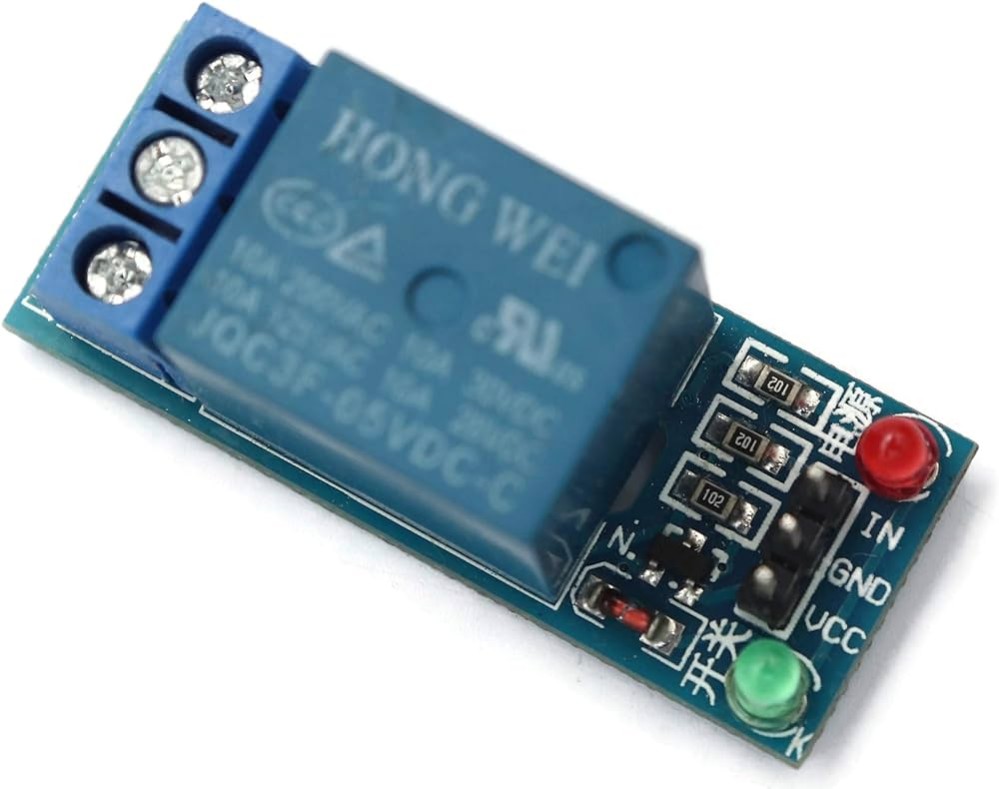

1.jpeg&width=620&quality=80)


1.jpeg&width=172&quality=80)


1.jpeg&width=300&quality=80)
12 v dc 1 channel relay
12V 1 Channel Relay Module is a small and easy to use . Use it to control one 240V power appliance directly from Arduino, Raspberry Pi, and other microcontrollers or low voltage circuits. Perfect for switching 240V appliances – lights, fans, etc, and even high power motors at lower voltages.
( No Reviews )
₹ 65 ₹99
99
Seller Electro Boat
Tags 12 v dc 1 channel relay




COD

Cancelable till shipped

7 Days Returnable
Product Details :
| Made In : | India |
Add FAQ
A 12V DC 1-channel relay is a versatile component used for controlling high-power devices with a low-power signal. Here’s a breakdown of its features and applications:
Key Features
- Voltage: Designed to operate with a 12V DC control signal.
- Single Channel: Can control one device or circuit.
- Isolation: Provides electrical isolation between the control circuit and the device being controlled.
- Normally Open (NO) or Normally Closed (NC): Configurations available, depending on your application needs.
Specifications
- Coil Voltage: 12V DC (typically requires a small current, usually around 70-100mA).
- Contact Ratings: Vary by relay; check for specifications like maximum current and voltage for the load (e.g., 10A at 250V AC).
- Operating Temperature: Most relays operate within a specified temperature range.
Wiring
-
Control Side:
- Connect the positive terminal of the 12V power supply to the relay's coil input.
- Connect the negative terminal to the ground.
- Use a control signal (e.g., from a microcontroller) to activate the relay by connecting it to the control pin.
-
Load Side:
- Connect the device (load) you want to control to the relay’s output terminals (COM and NO/NC).
Common Applications
- Home Automation: Control lights, fans, or appliances.
- Automotive: Switch on/off various electrical components in vehicles.
- Microcontroller Projects: Use with Arduino or Raspberry Pi to control high-voltage devices safely.
Installation Tips
- Heat Management: Ensure proper ventilation to prevent overheating during operation.
- Diode Protection: Consider adding a flyback diode across the relay coil to protect your circuit from voltage spikes when the relay is deactivated.
Troubleshooting Tips
- Relay Not Activating: Check the control signal and wiring.
- Inconsistent Operation: Inspect the relay for damage or loose connections.
If you need specific details on wiring, components, or applications, feel free to ask!

No FAQs Found
0 Reviews For this Product


.jpg&width=225&quality=80)

.jpg&width=225&quality=80)








